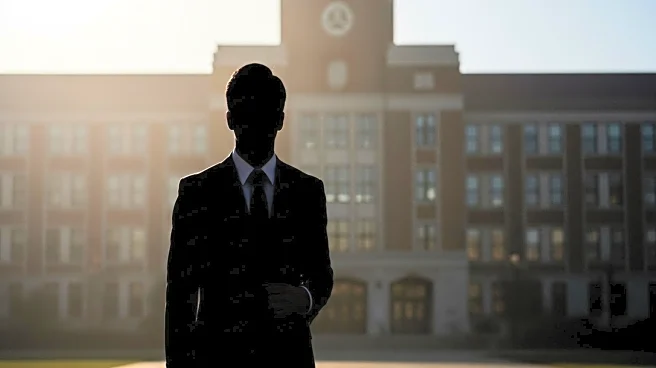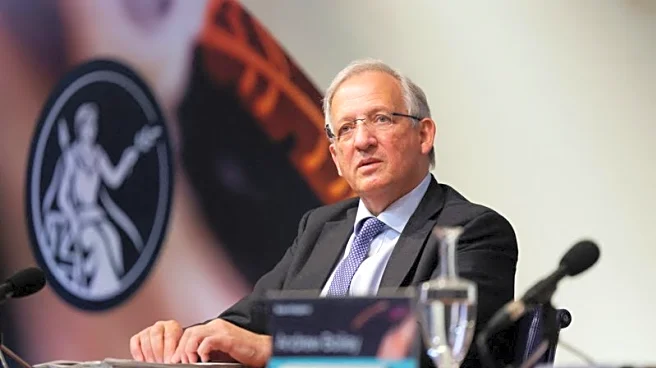What's Happening?
The film 'Steve', starring Cillian Murphy, portrays a dedicated head teacher at Stanton Wood, a reform school in the English countryside. Set in 1996, the story revolves around Steve's efforts to manage and guide troubled teenage boys. The school, privately funded, aims to rescue these youths from the brink of delinquency. Steve's compassionate approach is central to the narrative, as he navigates the challenges posed by the students' volatile behavior, a documentary crew, and a visit from a local MP. The film, adapted from Max Porter's novella 'Shy', shifts focus from the adolescent character to Steve, highlighting his struggles and dedication.
Why It's Important?
The film 'Steve' sheds light on the undervalued role of educators in society, particularly those working with at-risk youth. It emphasizes the emotional and social challenges faced by teachers in reform schools, highlighting the importance of compassion and resilience. By focusing on the teacher's perspective, the film contributes to the ongoing cultural conversation about the complexities of education and the need for supportive environments for troubled students. This portrayal can influence public perception and policy discussions regarding educational reform and support for educators.
What's Next?
The film's release may spark discussions about the portrayal of educators in media and the real-world implications for educational policy. Stakeholders in education might use the film as a reference point for advocating increased support and resources for teachers working in challenging environments. Additionally, the film could inspire further artistic explorations of the themes of education and youth rehabilitation, potentially influencing future projects in cinema and television.
Beyond the Headlines
Beyond its immediate narrative, 'Steve' touches on broader themes of social realism and the impact of socio-economic factors on education. The film's setting in 1996 Britain provides a historical context that may resonate with audiences familiar with the era's educational challenges. It also raises questions about the sustainability of privately funded educational initiatives and their role in addressing systemic issues within public education systems.











